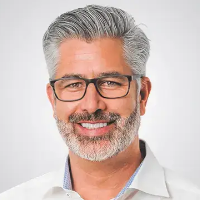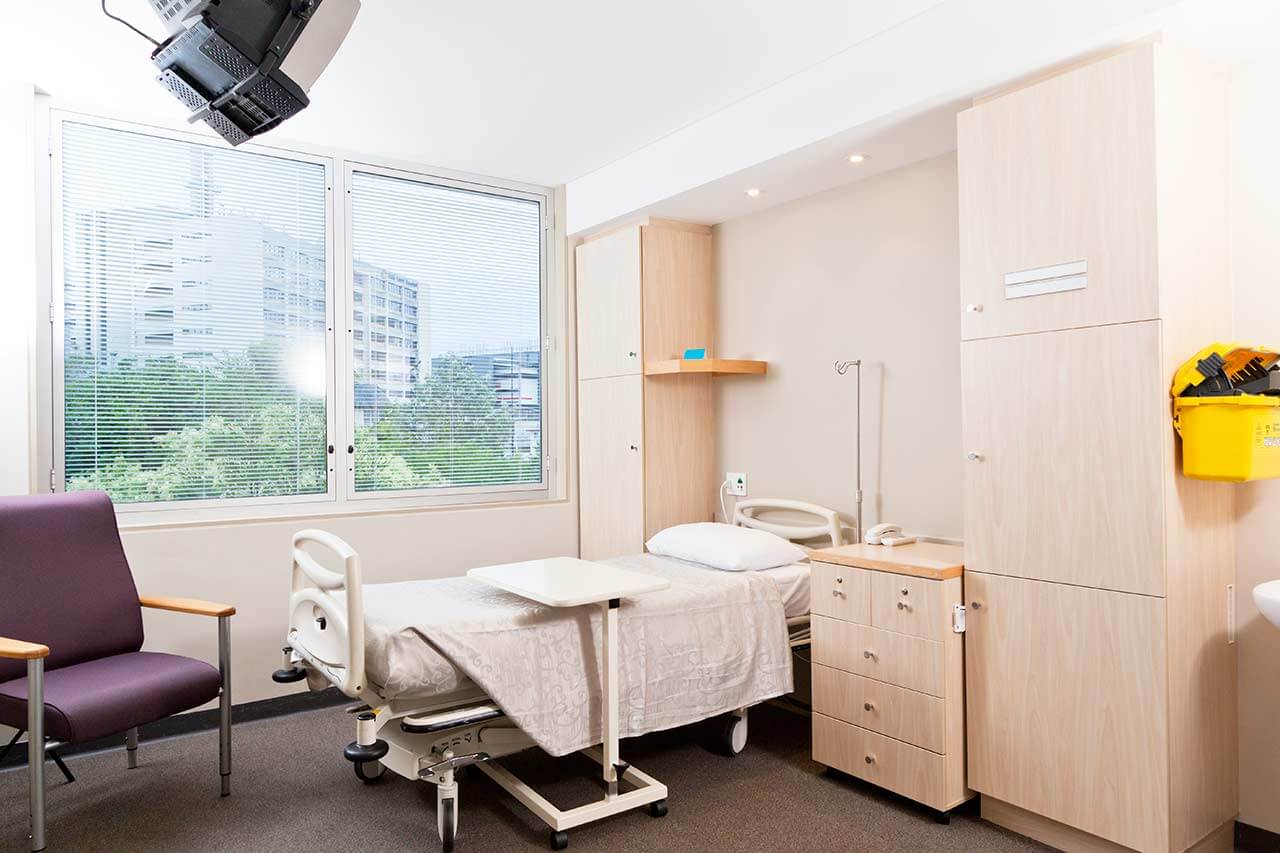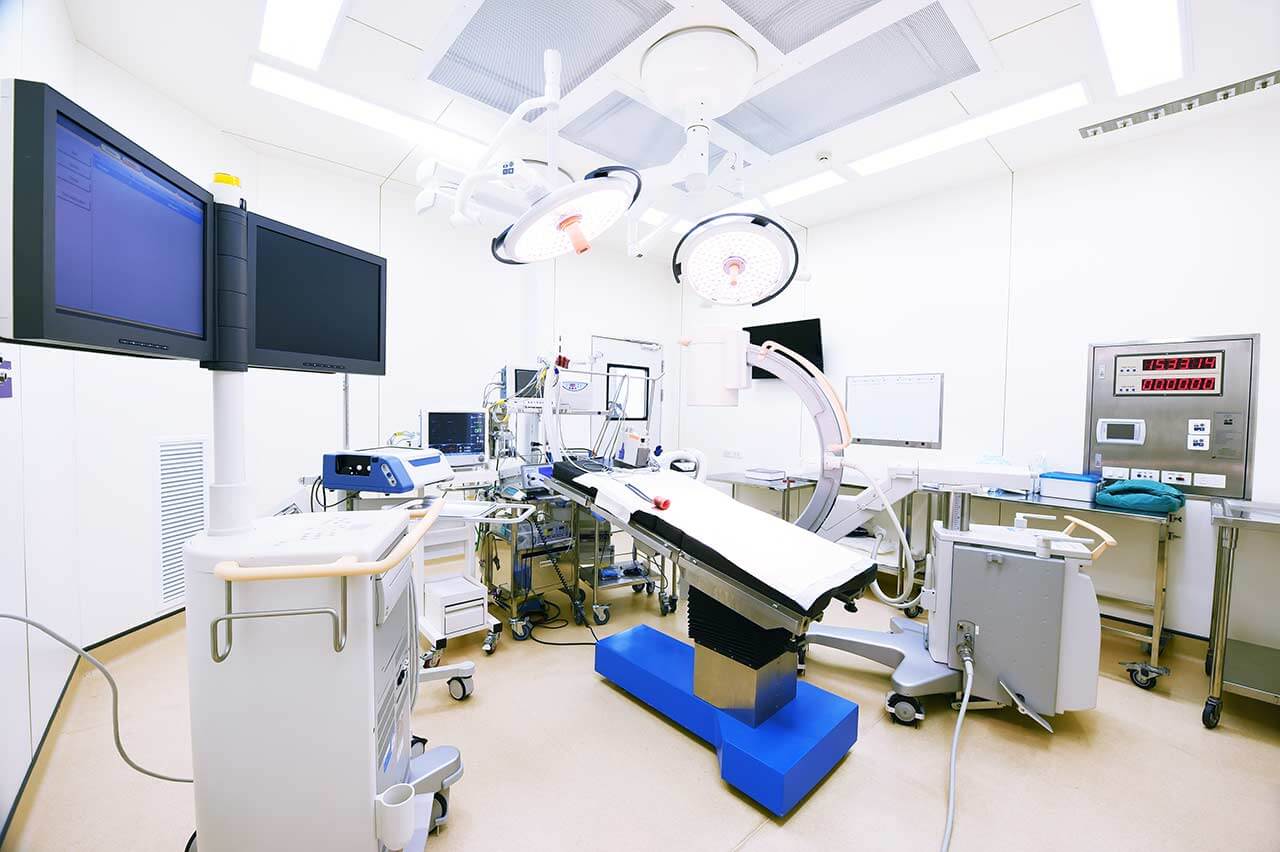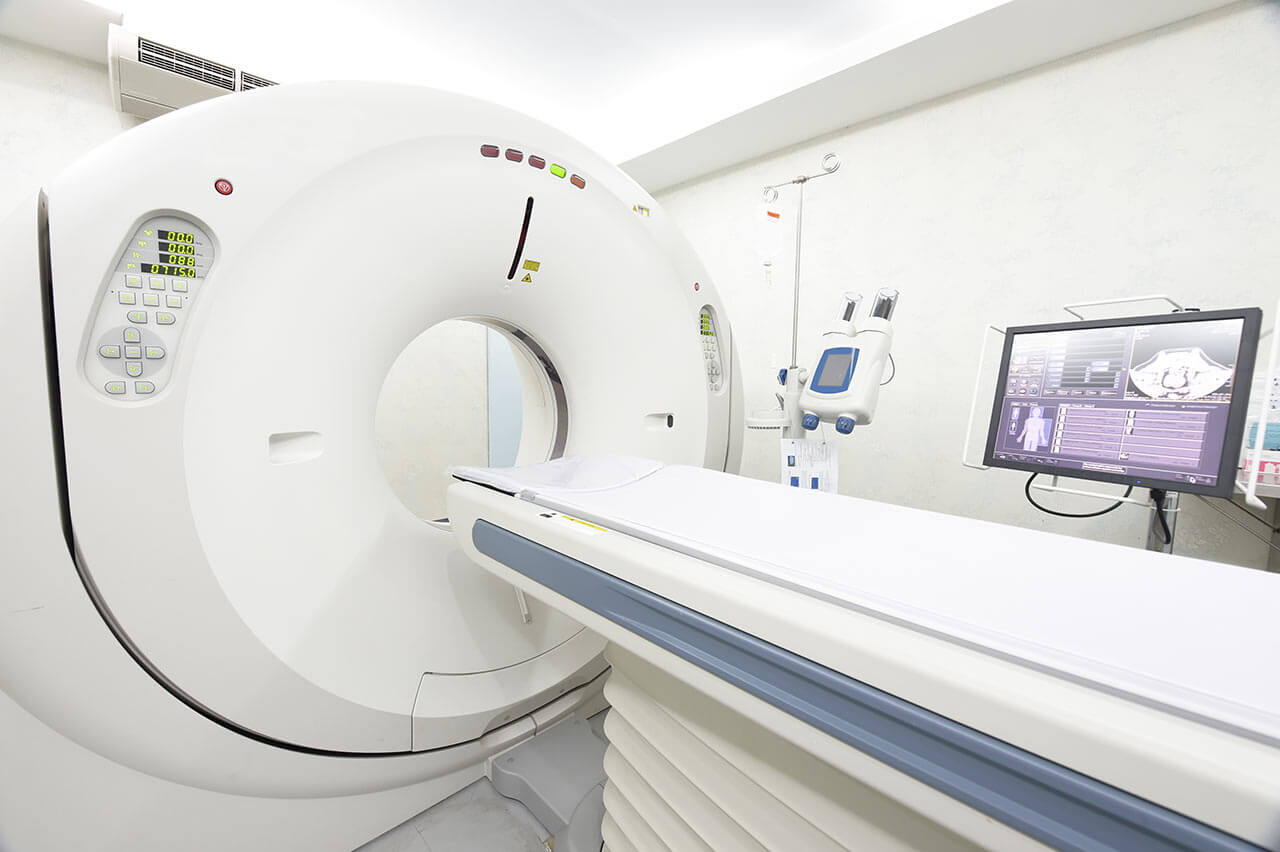
The program includes:
- Initial presentation in the clinic
- clinical history taking
- physical examination
- review of medical records
- laboratory tests:
- complete blood count
- biochemical analysis of blood
- lipid profile (HDL/LDL, cholesterol,
triglycerides, homocysteine) - coagulation tests (aPTT, PT, INR)
- inflammation indicators (CRP, ESR)
- kidney function tests (creatinine, urea)
- X-ray examination of the ankle joint
- CT/MRI of the foot (if indicated, 650/1200 €)
- stem cell therapy (adipose tissue-derived stem cells)
- nursing services
- consultations of related specialists
- treatment by head physician and leading experts
- explanation of individual treatment plan
- written recommendations for follow-up
How program is carried out
During the first visit, the physician conducts a clinical examination and goes through the results of previous diagnostic procedures. After that, you will undergo the necessary additional examinations, such as the laboratory blood and urine tests, ankle X-ray, MRI or CT scan of the foot. After a comprehensive assessment of the health condition, you will undergo stimulation therapy. This is an injection of drugs that increase the number of active stem cells in the body.
After this, stem cells are harvested. Autologous (i.e. your own) adipose stem cells are most commonly used to treat the ankle joint arthrosis. The obtained stem cells are processed with stimulating substances and cultivated in the laboratory. This allows to additionally increase their number and the effectiveness of the procedure.
The final stage of therapy is the introduction of stem cells in the diseased joint using intra-articular injection, symptomatic therapy and subsequent medical follow-up. The maximum effect of the therapy is usually observed in 4-6 months. Treatment results last for several years. The exact prognosis depends on the clinical course of the disease, your age, individual peculiarities, concomitant therapy and other factors. During the final consultation, your physician will give you detailed recommendations for further follow-up and treatment.
Required documents
- Medical records
- X-ray examination, MRI/CT scan (if available)
Service
You may also book:
 BookingHealth Price from:
BookingHealth Price from:
About the department
The Department of Orthopedics and Hand Surgery at the ATOS Orthopedic Clinic Braunfels offers the full range of medical services in its fields of competence. The department's key area of specialization is hip and knee replacement surgery. The medical facility also successfully performs arthroscopic procedures on the hip, knee, and shoulder joints. In addition, the department provides medical care for patients with hand diseases such as wrist arthrosis, rhizarthrosis, carpal tunnel syndrome, Dupuytren's contracture, and trigger fingers (tendovaginitis stenosans). The team of orthopedists in the department prefers minimally traumatic surgery, so the specialists mostly work with minimally invasive and microsurgical techniques. The effectiveness of such operations is in no way inferior to classical open surgery, but at the same time, they provide less blood loss, less pronounced postoperative pain, rapid restoration of mobility, and excellent cosmetic results. The department's specialists are sensitive to the individual needs and wishes of the patients and always take them into account when planning the treatment. Operations are performed under conditions of absolute sterility with the use of state-of-the-art equipment.
The Head Physician of the department is Dr. med. Michael Kremer. He has many years of experience in the treatment of orthopedic diseases. He specializes in hip, knee, and shoulder replacement surgery, including revision arthroplasty. Over the years of his clinical practice, Dr. Kremer has performed more than 1,000 arthroplasty procedures. He was awarded a certificate from the German Knee Society (DKG) for achievements in his work. In addition, according to the Focus magazine, he is one of Germany's top experts in the field of arthroplasty.
The primary focus of the department's clinical practice is the conservative and surgical treatment of hip diseases. The doctors most often treat patients with hip arthrosis (coxarthrosis), periprosthetic fractures, femoral head avascular necrosis, and hip dysplasia. Early stages of hip pathology can mostly be treated with conservative therapies, such as physiotherapy, therapeutic exercises, medications, and intra-articular injections. If patients do not seek medical attention in time, the only effective treatment is surgery. It should be noted that the department's orthopedists have been performing hip replacement surgeries for many years and have exceptional experience in this area. The specialists perform hip replacement surgeries using minimally invasive techniques without cutting tendons or injuring the muscular system. Minimally traumatic operations to replace the hip joint with a prosthesis allow for minimal blood loss and the fastest possible return to mobility. In addition, minimally invasive surgery leaves barely noticeable scars. Doctors in the department work with high-quality prostheses that last 20 years or more. Patients are back on their feet on the day of surgery. Experienced physiotherapists work with them. It takes 6-12 weeks to fully regain mobility and return to a full life after hip replacement surgery. The length of the recovery period depends on the patient's age, physical fitness, and other factors.
The department also successfully treats knee diseases. The specialists focus on patients with knee arthrosis (gonarthrosis), cartilage lesions, patellar instability, cruciate ligament tears, meniscus tears, and other pathologies. In the advanced stages of gonarthrosis, the department's doctors perform arthroplasty, which is an operation to replace the knee joint with an artificial one in order to restore mobility and eliminate pain. Depending on the degree of degenerative damage to the knee joint, the patient is recommended to undergo partial or total joint replacement surgery. Knee arthroplasty is performed in the department using minimally invasive techniques, often under regional anesthesia. The surgical procedure takes approximately 90 minutes. The department is equipped with the innovative ROSA® robotic system, which allows for implanting a knee joint prosthesis with pinpoint precision. Following knee replacement surgery, patients are recommended to undergo professional rehabilitation in a specialized medical center. Typically, postoperative recovery takes 4-6 weeks.
Furthermore, the department specializes in the treatment of shoulder diseases such as arthrosis, impingement syndrome, rotator cuff tears, shoulder dislocation, and frozen shoulder syndrome. In many cases, the above pathologies respond well to conservative treatment with the help of pills, injections, physiotherapy, electrotherapy, acupuncture, cryotherapy, and thermotherapy. If conservative measures fail, the patient is prescribed surgery. Surgical procedures for shoulder diseases are performed in the department using sparing arthroscopic techniques, including shoulder arthroplasty. The specialists in the department regularly perform surgery to replace the shoulder joint with a prosthesis, so they have impressive experience in this area, which is a very important point because such operations require special expertise. Due to the fact that shoulder replacement surgery is performed much less frequently than hip and knee arthroplasty, patients should seek medical help from healthcare facilities where such operations are performed on a regular basis.
The department also provides medical services for patients with hand diseases. Doctors of this specialty are competent in the treatment of wrist arthrosis, rhizarthrosis, carpal tunnel syndrome, Dupuytren's contracture, and trigger fingers (tendovaginitis stenosans). The department's doctors achieve good results mostly with the help of conservative treatments such as physiotherapy, manual therapy, ultrasound therapy, acupuncture, electrotherapy, cryotherapy, etc. If surgery is required, effective arthroscopic procedures are offered to patients.
The department's clinical focuses include the following:
- Diagnostics and treatment of hip diseases
- Conservative and surgical treatment of hip arthrosis
- Conservative and surgical treatment of periprosthetic fractures
- Conservative and surgical treatment of femoral head avascular necrosis
- Conservative and surgical treatment of hip dysplasia
- Diagnostics and treatment of knee diseases
- Conservative and surgical treatment of knee arthrosis
- Conservative and surgical treatment of cartilage lesions
- Conservative and surgical treatment of patellar instability
- Conservative and surgical treatment of cruciate ligament tears
- Conservative and surgical treatment of meniscal tears
- Diagnostics and treatment of shoulder diseases
- Conservative and surgical treatment of shoulder arthrosis
- Conservative and surgical treatment of shoulder impingement syndrome
- Conservative and surgical treatment of rotator cuff tears
- Conservative and surgical treatment of shoulder dislocation
- Conservative and surgical treatment of frozen shoulder
- Diagnostics and treatment of hand diseases
- Conservative and surgical treatment of wrist arthrosis
- Conservative and surgical treatment of rhizarthrosis
- Conservative and surgical treatment of carpal tunnel syndrome
- Conservative and surgical treatment of Dupuytren's contracture
- Conservative and surgical treatment of trigger fingers (tendovaginitis stenosans)
- Diagnostics and treatment of other orthopedic diseases
Curriculum vitae
Higher Education and Professional Career
- September 1998 - November 2005 Medical studies, Johannes Gutenberg University Mainz.
- February 2006 - June 2006 Internship, Department of Trauma Surgery and Reconstructive Surgery, Catholic Hospital Mainz.
- August 2006 - August 2012 Residency, Department of Trauma Surgery and Orthopedic Surgery, BG Trauma Clinic Frankfurt.
- August 2012 Board certification in Orthopedics and Trauma Surgery.
- September 2012 Senior Physician, Department of Trauma Surgery and Orthopedic Surgery, BG Trauma Clinic Frankfurt.
- August 2015 Additional qualification in Special Trauma Surgery.
- September 2015 Senior Physician, Department of Trauma Surgery and Orthopedic Surgery, BG Trauma Clinic Frankfurt.
- August 2018 Additional qualification in Special Orthopedic Surgery.
- August 2018 Managing Senior Physician and Head of the Maximum Care Center for Arthroplasty, BG Trauma Clinic Frankfurt.
Clinical Interests
- Hip replacement surgery.
- Knee replacement surgery.
- Shoulder replacement surgery.
Memberships in Professional Societies
- German Trauma Society (DGU).
- German Society for Orthopaedics and Trauma Surgery (DGOU).
- German Arthroplasty Society (AE).
Photo of the doctor: (c) ATOS Orthopädische Klinik Braunfels
About hospital
The ATOS Orthopedic Clinic Braunfels is a specialized medical facility for the treatment of musculoskeletal diseases. The clinic provides high-quality medical care for patients with hip, knee, and shoulder diseases, and also treats the entire range of hand diseases and spinal pathologies. The medical institution enjoys the status of a leading Center of Excellence for Arthroplasty and Spinal Surgery in the German state of Hesse. The clinic is distinguished by excellent results in the field of hip replacement surgery and hip arthroscopy. The clinic boasts of its excellent medical and technical base. The health of patients is in the safe hands of highly qualified doctors with many years of experience in the treatment of orthopedic diseases. Doctors are guided by the recommendations of the German Society for Orthopaedics and Trauma Surgery (DGOU) in their everyday clinical practice.
The ATOS Orthopedic Clinic Braunfels has 116 inpatient beds. The clinic treats more than 3,000 inpatients and more than 9,000 outpatients annually. The clinic's team of orthopedists performs more than 1,500 surgical procedures of varying complexity annually, the majority of which are hip and knee replacement surgeries. The clinic performs over 500 surgical procedures on the spine every year, so the doctors are deservedly proud of their wealth of experience and outstanding success in this area.
Before prescribing a course of treatment, a team of orthopedists conducts a comprehensive diagnosis. The treatment regimen is always developed individually, taking into account the needs and wishes of each patient. Conservative treatment options are considered first. If they do not bring the desired result or the patient seeks medical help at an advanced stage of the pathological process, surgery will be prescribed. The clinic's specialists use modern minimally traumatic surgical techniques, which contribute to minimal surgical risks and rapid recovery after surgery. The clinic uses the innovative ROSA® robotic system for knee replacement surgery. This allows for high-precision positioning of the prosthesis, which largely determines the success of the surgical procedure.
The ATOS Orthopedic Clinic Braunfels has everything necessary to restore the patient's health: highly qualified doctors, advanced technologies, sparing treatment methods, sensitive care, and a high level of comfort. The medical institution is one of the best in Germany in its field of competence, which is confirmed by patient ratings and reviews, as more than 88% of patients highly rate the treatment here and recommend the services of this clinic.
Photo: (с) depositphotos
Accommodation in hospital
Patients rooms
The patients of the ATOS Orthopedic Clinic Braunfels stay in comfortable single and double rooms with all necessary amenities. The patient room furnishings include a comfortable automatically adjustable bed, a bedside table with a pull-out tray, a wardrobe, a table and chairs, a TV, and a telephone. The patient rooms have access to Wi-Fi. Each patient room has an ensuite bathroom with a shower and a toilet.
Meals and Menus
Patients are offered delicious and balanced meals three times a day: breakfast, lunch, and dinner. The menu always features dietary and vegetarian dishes. If necessary, the patient will be provided with an individual menu.
Further details
Standard rooms include:
![]() Toilet
Toilet
![]() Shower
Shower
![]() Wi-Fi
Wi-Fi
![]() TV
TV
Accompanying person
Your accompanying person may stay with you in your patient room or at the hotel of your choice during the inpatient program.
Hotel
You may stay at the hotel of your choice during the outpatient program. Our managers will support you for selecting the best option.




